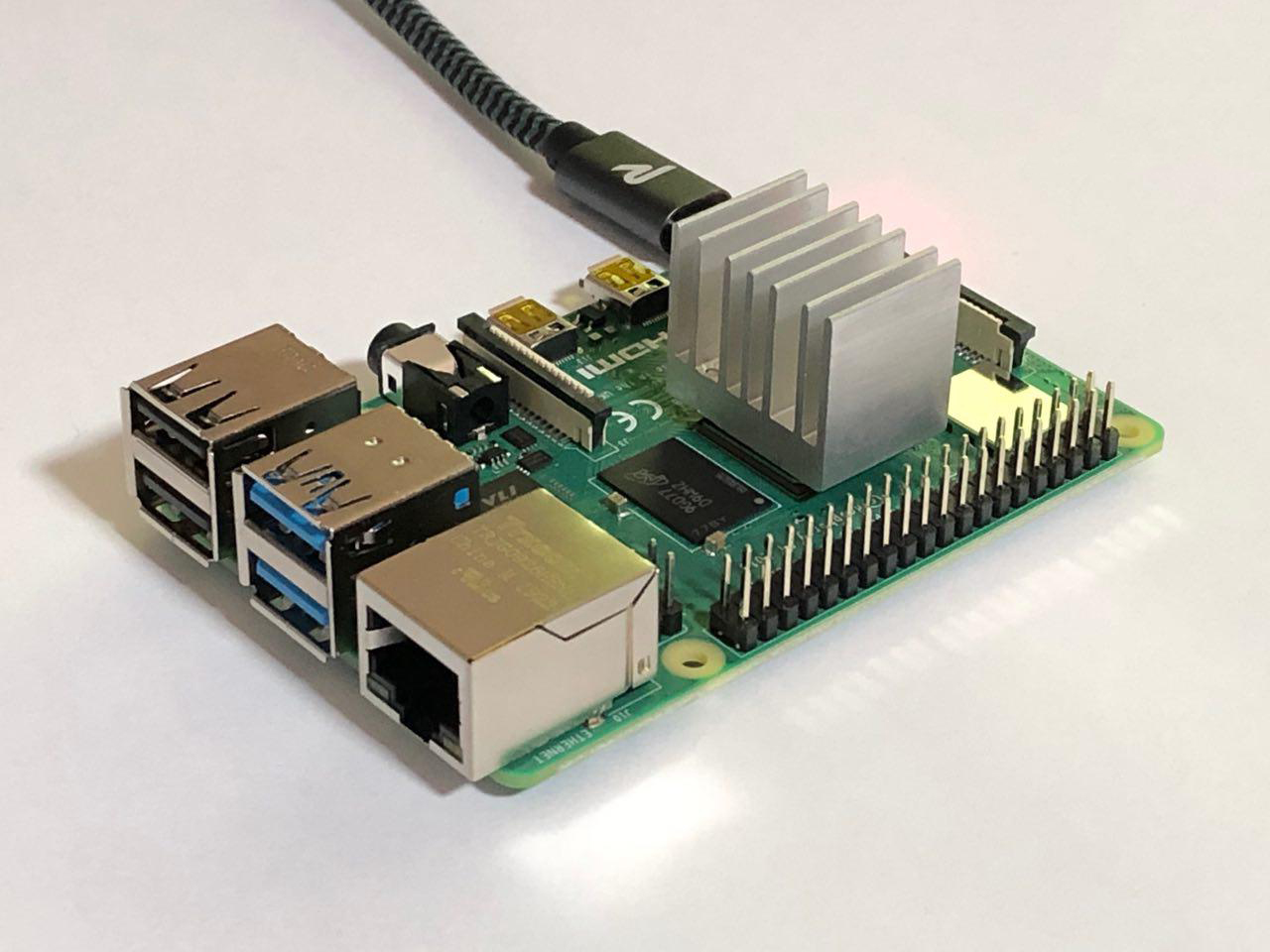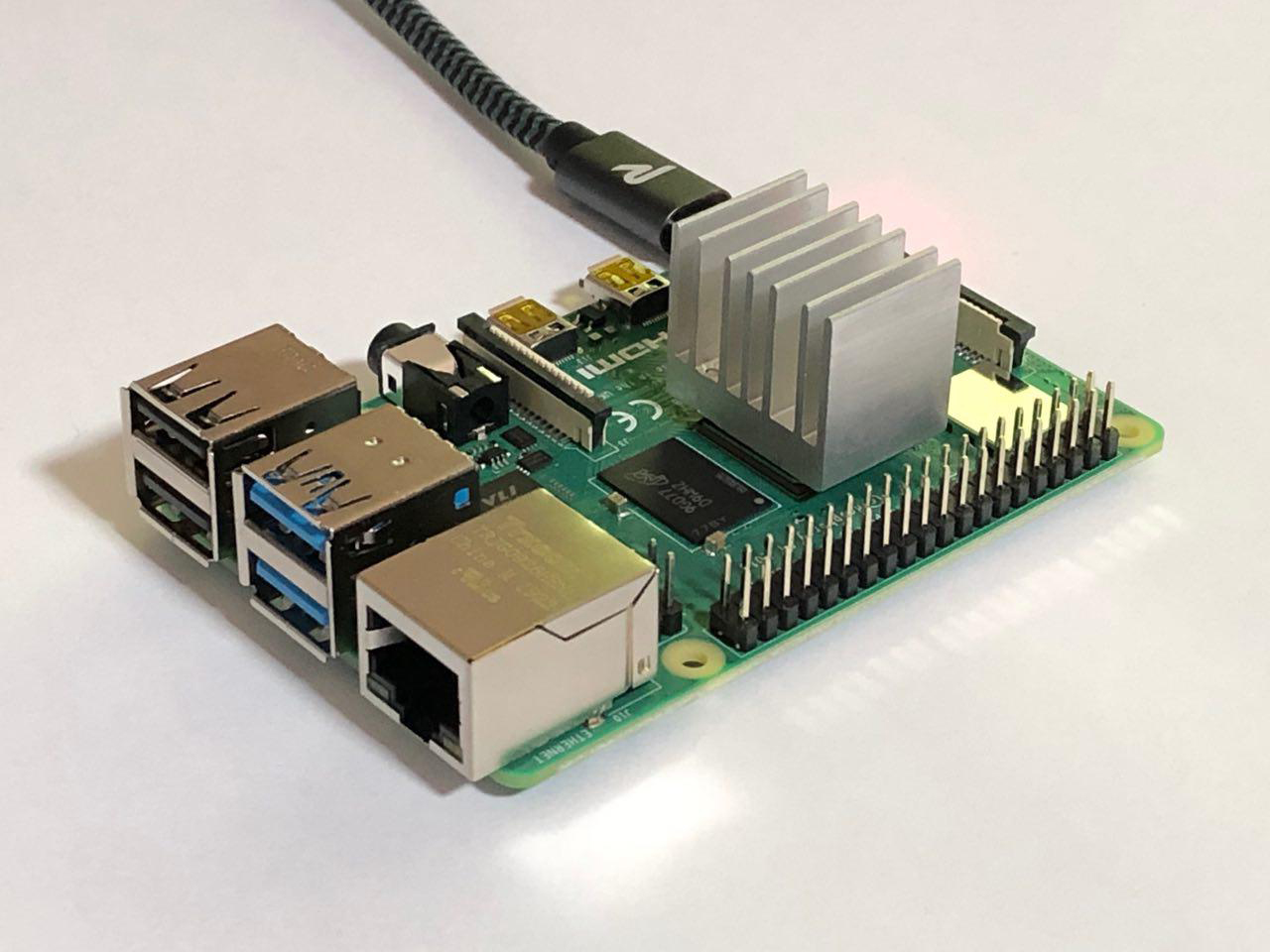Overheating can be a major problem with a Raspberry Pi 4. Here, learn ways to keep your board cool and running smoothly!
The Raspberry Pi 4 is a magnificent single-board computer that offers a lot more than its predecessors in terms of performance. However, the great improvement in performance comes at a price. If you have tested a Pi 4 for any time, you might have noticed that it can run quite warm. Consistent overheating can seriously damage the board.
This tutorial provides an overview of why and how overheating can be problematic and what you can do to keep your new Raspberry Pi as cool as possible during operation.
What Happens When a Pi 4 Overheats?
Even if the Pi’s CPU can easily reach temperatures up to 165 degrees Fahrenheit (75°C), the computer’s electronic components shouldn’t get damaged by that. However, running the hardware under such conditions for extended periods is what can shorten the Pi’s lifespan in the long run. More immediately, you might experience thermal throttling, which means that the overall speed of the system is reduced to give it some time to breathe.
So, if you notice a significant performance drop over time or your Pi is just too hot to handle, even when you’re not performing any demanding tasks, you should consider adding a cooling solution.
Classic Ways to Keep the CPU Cool
While you can still operate the computer just fine right out of the box, I can only recommend that you use it with some form of passive or active cooling — especially when you want to use a desktop environment.
The easiest way to cool down your Pi is by adding a heatsink. This passive solution doesn’t cost a lot and it doesn’t need any power to run. Depending on the size of the heatsink you add, the temperatures can significantly drop. However, the heat can still build up over time.
My Raspberry Pi 4 with a heatsink
If you want to put the computer into an enclosure, you should consider adding a fan to your setup. This will help the warm air escape as it sucks in cooler air at a faster pace compared to natural convection. Luckily, this is also a cheap solution — you can find enclosures with a built-in fan for under ten dollars. Keep in mind that the best result comes when you use a heatsink in combination with a fan.
Alternative Ways to Cool a Pi 4
Apart from the obvious methods discussed above, you could try using the lite-version of Raspbian if you don’t need the desktop environment that comes with the full installation. This will leave the CPU with fewer tasks to execute and that, in turn, helps to keep the system cool when it’s idling.
I noticed that my first Raspberry Pi 4 (a 2GB model) was running hotter than my new 1GB model. This might be due to a faulty unit, but if your Pi keeps running very hot (over 175 °F / 80 °C) you might consider trying a different one if your project doesn’t rely on a specific model.
Pi 4 Temperature Measurements
To back up the information presented here, I ran a series of tests to measure the Pi 4’s surface temperature (in °C). Each test was executed on a 1GB Raspberry Pi 4 with Bluetooth and Wi-Fi enabled. In the desktop test, I streamed a 1080p video. Each test was executed for five minutes.
Test #
| N/A | Heatsink | Heatsink + Fan
|
|---|
Idle | 38 | 37 | 35 |
Text editing (console)
| 45 | 40 | 35 |
Desktop | 62 | 52 | 43 |
Python script
| 55 | 47 | 38 |
Keeping a Pi 4 Cool Increases its Longevity
If you notice a significant performance decrease over time or your Pi is getting too hot to handle, you should consider adding a cooling solution.
Heatsinks are very cost-effective and don’t require power. However, the heat can still build up over time. And remember, if you want to use an enclosure, you should consider adding a fan to your setup. Even more importantly, make sure you're updating your Pi 4's firmware — each firmware update has shown lower running temps.




